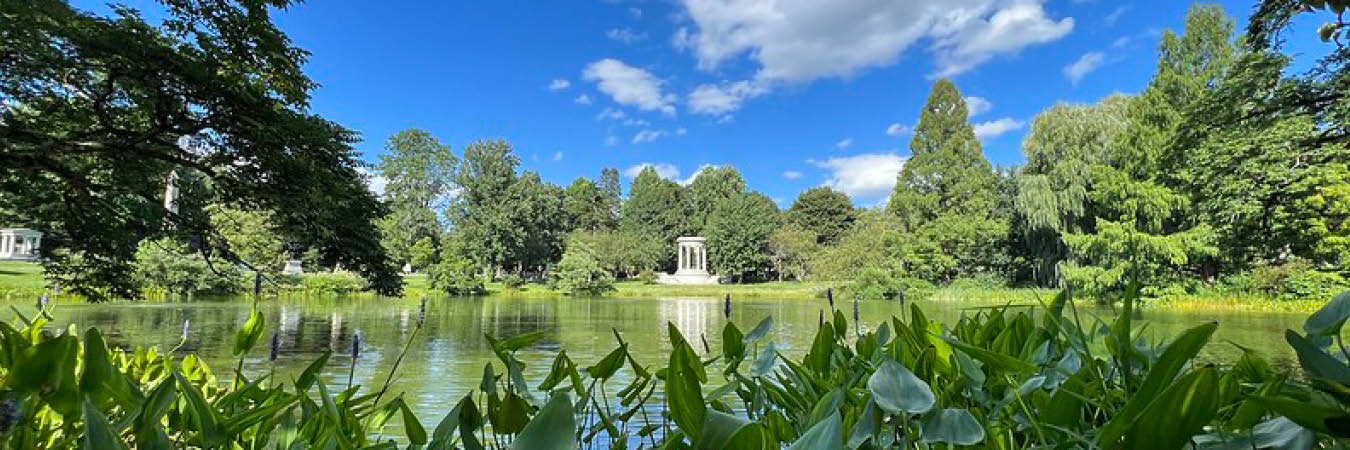About

Mount Auburn Cemetery was established in 1831 with a most ambitious vision. Within a forested landscape nestled between Cambridge and Watertown, our founders created an extraordinary place, one where the living mourner would come to find solace and the public would come to find inspiration.
The founders envisioned the Cemetery as the place where the great and the good of Boston — without restrictions on religion or race — would be remembered and celebrated for all of time in a setting of exceptional beauty. Nearly 190 years and more than 100,000 burials later, we continue to honor that founding vision, offering burial space and end-of-life services to families in their time of need and preserving this landscape of memory for 200,000 annual visitors.
Mount Auburn Cemetery is a singular treasure, a place where history and beauty meet memory and nature. Whether you come to birdwatch, enjoy the ever-changing landscape, admire the monuments, or enjoy a contemplative moment in this urban oasis, Mount Auburn is here for you. And it’s here for everyone: Mount Auburn is a National Historic Landmark that is open to the public at no cost, 365 days a year.
